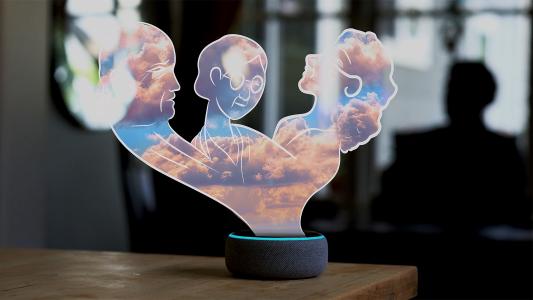John Deere, one of the world’s biggest farming equipment manufacturers, has just debuted an autonomous tractor that will go on sale in 2022 — bringing the self-driving tech into the mainstream.
The challenge: Most of the food we eat comes from farms, and as the world population grows, farmers will need to produce more food to keep everyone fed.
Many farmers are already having trouble finding enough laborers, though — younger people are increasingly opting for less physically demanding careers, and immigration policies are making it harder for migrant workers to reach U.S. farms.
“You can turn [the tractor] loose and just let it work 24 hours a day.”
Doug Nimz
An autonomous tractor: Tractors are an essential part of farming — they pull the equipment used for plowing, planting, fertilizing, harvesting, and more.
Traditionally, all of this work could only be done with the help of a tractor driver, during good weather and normal working hours. But self-driving or autonomous tractors don’t need a human driver, so they can solve one part of the labor problem.
“You want to get as much work done as you can, [but] asking an employee to [work late at night after a long day] is hard,” Doug Nimz, a Minnesota farmer who tested John Deere’s new autonomous tractor, told CNET.
“An autonomous tractor can do this … It’s no problem. It doesn’t care,” he continued. “So you can turn it loose and just let it work 24 hours a day to get ahead of weather.”
Not only can an autonomous tractor keep working when a manually driven machine would likely be parked, the vehicle’s cameras, sensors, and AI software can allow it to do the job more precisely, planting seeds in straighter rows at the perfect distance from one another.
This can increase the efficiency of a farm, ensuring the maximum number of crops are grown on the given amount of land.
What’s new? John Deere has now debuted its first autonomous tractor at CES, the annual tech showcase.
The company says it plans to begin selling the tractors later in 2022, and while it has yet to reveal a price, it has said it’s considering a subscription or leasing model. That may make the vehicles more affordable upfront — and give farmers a chance to try it out before committing to a big investment.
Farmers use an app to pause or restart the autonomous tractor, check how much fuel it has, and more.
How it works: To use John Deere’s autonomous tractor, a farmer just has to transport it to the desired field and drive it around the perimeter once to create a map of the area.
After that, they can use an app to pause or restart the tractor, check how much fuel it has, and more. If the tractor encounters an obstacle, it’ll stop and send the farmer an image of it via the app so that they can decide what to do next.
Initially, the tractors will work autonomously with the plows used to till soil, but John Deere plans to add more capabilities in the future.
The big picture: This isn’t the first autonomous tractor to reach farms — the small California startup Monarch Tractor started selling its all-electric self-driving tractor in 2021, and other companies have at least demonstrated their own models.
However, John Deere is one of the biggest farm machinery manufacturers in the world, meaning its launch of an autonomous tractor is likely to make far bigger waves in the agriculture industry than any machine that came before it.
We’d love to hear from you! If you have a comment about this article or if you have a tip for a future Freethink story, please email us at tips@freethink.com.
